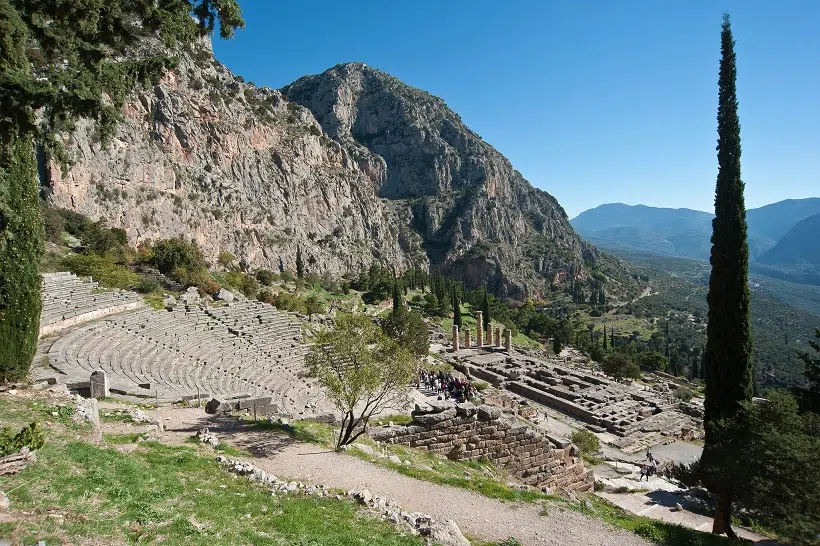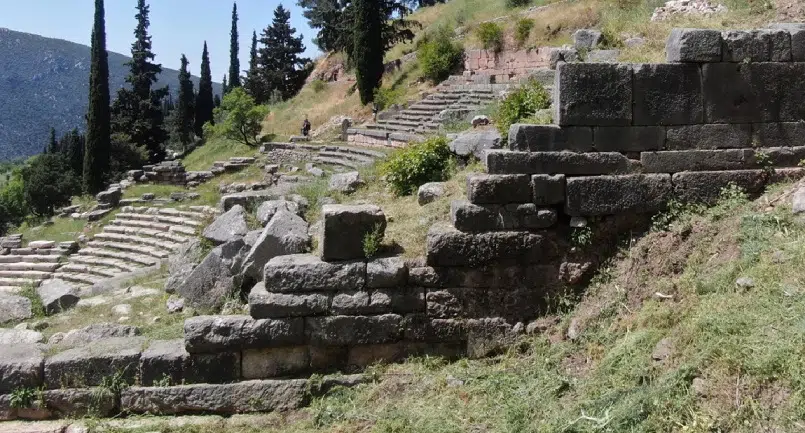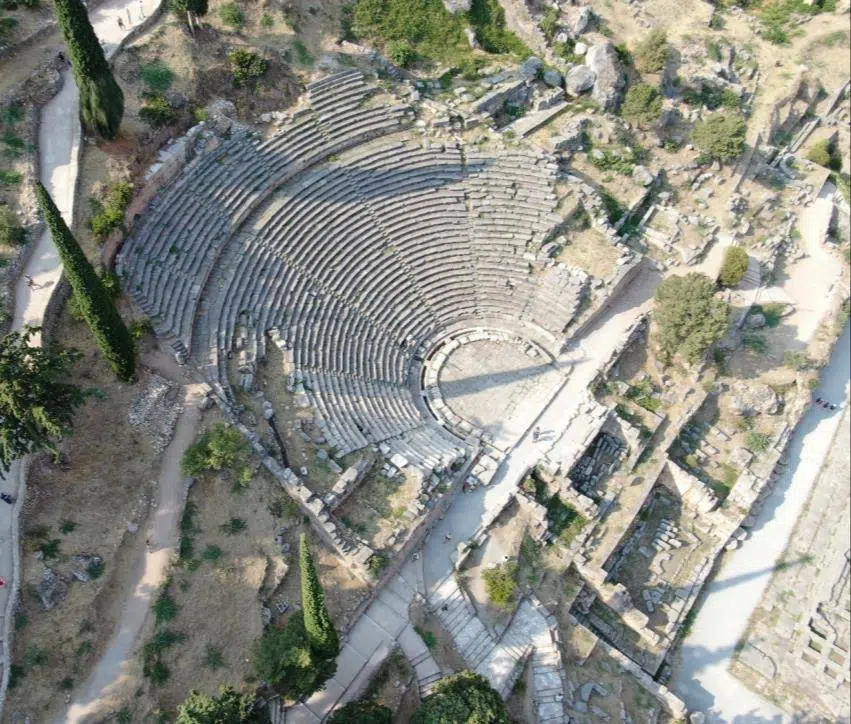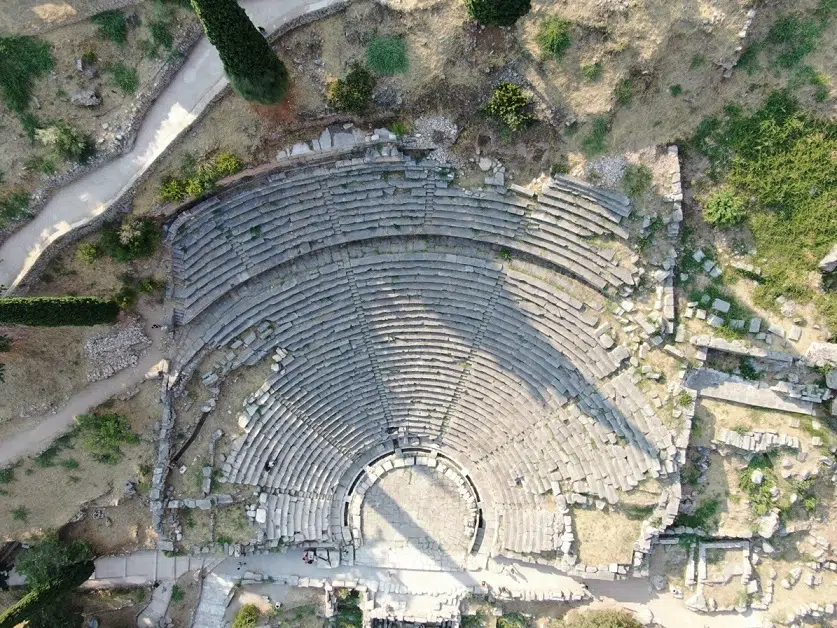
The emblematic ancient Greek theater of Delphi in Central Greece, a UNESCO World Heritage Site, will undergo new restoration and preservation works, scheduled to conclude in 2027.
Situated within the Temple of Pythian Apollo, on the slopes of Mount Parnassus, the theater of Delphi was the intellectual and artistic equivalent to the athletic stadium at Olympia, as this is where the musical contests of the Pythian games and other religious festivals took place in antiquity.
The theater could seat five thousand spectators.
Delphi theater’s new restoration to address chronic challenges
Although excavated and restored, the theater has been in poor condition, according to the Greek Ministry of Culture and Sports’ archaeological sites online database.
The cavea of the theater has subsided, the limestone blocks are cracking and flaking, and many of its architectural members, such as seats and blocks of the parodoi walls, remain scattered throughout the temenos.
The new preservation works will first deal with the geological pathology of the area, which sits on a tectonic fault line, and, secondly, on the impact of climate change on the site’s soil. The soil is prone to erosion and sedimentation.

It will then attempt to restore and fix some of the damaged blocks, as well as reconstruct the destroyed east part of the theater with the addition of about a hundred new blocks.
Culture and Sports Minister Lina Mendoni commented that the aim is to boost the theater’s function as an important cultural destination and resource for development, at local and national levels, but also to preserve the character of Delphi as a landmark for world culture.
An ancient site of unique importance and impact
As described by UNESCO, the archaeological site of Delphi bears a unique testimony to the religion and civilization of ancient Greece but also had an immense impact throughout the ancient world.
Mycenaean remains show that the area was inhabited in the 2nd millennium BC, but the development of the sanctuary and oracle of Apollo, the Olympian god of light, knowledge, and harmony, began in the 8th century BC.
The religious and political influence of the site of Delphi over the whole of Greece increased during classical antiquity, while its fame spread to the rest of the ancient world, attracting worshippers from faraway lands.

The theater’s present form with its stone-paved orchestra, stone seats, and decorated stage is the result of a 160/159 BC restoration sponsored by Eumenes II of Pergamon, according to archaeologist Rosina Kolonia.
However, the theater’s original form is unknown. It is possible spectators sat on wooden seats or on the ground before the first stone-built theater was constructed in the fourth century BC and was subsequently refurbished several times.
A place of celebration “reflecting triumphant Hellenism”
The Delphi Theater and the Stadium, where the Pythian Games took place every four years, were “places of community celebrations reflecting triumphant Hellenism,” UNESCO states.
According to Kolonia’s description of the Delphi theater, the cavea is divided into two uneven sections by a paved diazoma, or landing, consisting of twenty-seven tiers of seats in the lower section and seven in the upper. It is then divided vertically by a series of staircases into six and seven cunei for the upper and lower sections respectively.

The horse-shoe-shaped orchestra is surrounded by an enclosed conduit. Its pavement and parapet are Roman. Inscriptions relevant to the emancipation of slaves are embedded in the walls of the parodoi, but their texts have become illegible through wear.
The stage, of which only the foundations remain, was probably divided into the proscenium and the stage proper, and its front was adorned with a relief frieze depicting the Labors of Hercules.
See all the latest news from Greece and the world at Greekreporter.com. Contact our newsroom to report an update or send your story, photos and videos. Follow GR on Google News and subscribe here to our daily email!



